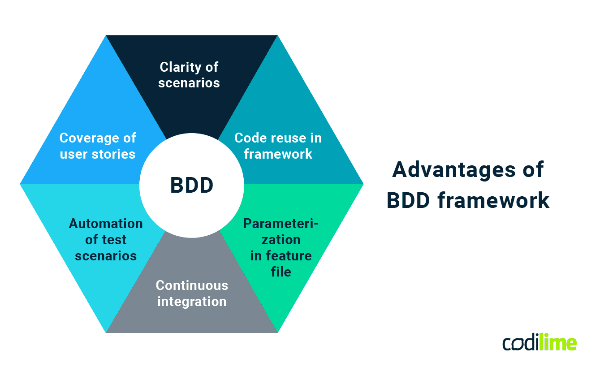The Role of BDD in Full Stack Java Development for Cloud-Native Applications
Introduction
Behavior-Driven Development (BDD) has emerged as a powerful approach for ensuring that software development aligns closely with business objectives. By focusing on the behavior of the system from the perspective of the end-user, BDD fosters collaboration between stakeholders, developers, and testers, leading to higher quality, more maintainable, and more valuable software. This whitepaper explores the significance of BDD in full stack Java development for cloud-native applications, highlighting its benefits and best practices.
Understanding BDD
BDD is a collaborative approach to software development that emphasizes the importance of understanding the desired behavior of the system before writing code. It involves:
-
Shared Understanding: Stakeholders, developers, and testers work together to define the system's behavior using a common language, often expressed in natural language scenarios.
-
Test-Driven Development: Test cases are written before the code, ensuring that the system's behavior meets the defined expectations.
-
Continuous Integration: Automated tests are integrated into the development process to provide early feedback and catch issues before they become more costly to fix.
Benefits of BDD in Full Stack Java Development
-
Improved Communication and Collaboration:
-
BDD fosters a shared understanding of the system's requirements among stakeholders, developers, and testers.
-
By using a common language, BDD reduces misunderstandings and ensures that everyone is working towards the same goals.
-
-
Enhanced Quality and Maintainability:
-
BDD emphasizes writing tests before code, leading to higher quality software with fewer defects.
-
The focus on behavior-driven development makes it easier to maintain and evolve the codebase as requirements change.
-
-
Faster Time to Market:
-
By identifying potential issues early in the development process, BDD can help accelerate the time to market.
-
Automated tests can also reduce the time required for manual testing, allowing developers to focus on building new features.
-
-
Better Alignment with Business Objectives:
-
BDD ensures that the software being developed aligns closely with the business's goals and needs.
-
By focusing on the behavior of the system from the perspective of the end-user, BDD helps to deliver software that provides real value.
-
Best Practices for BDD in Full Stack Java Development
-
Choose the Right BDD Framework:
-
Consider using a BDD framework like Cucumber or JBehave to structure your tests and improve readability.
-
These frameworks provide tools for writing executable specifications and integrating them into your development process.
-
-
Involve Stakeholders Early:
-
Engage stakeholders from the beginning to define the system's behavior and ensure that it meets their needs.
-
Use techniques like user stories and acceptance criteria to capture requirements in a clear and concise manner.
-
-
Write Comprehensive Scenarios:
-
Create detailed scenarios that cover a wide range of use cases and edge cases.
-
Use a Gherkin syntax to define scenarios in a human-readable format.
-
-
Automate Tests:
-
Automate your BDD tests to ensure that they are executed consistently and efficiently.
-
Integrate automated tests into your continuous integration pipeline to provide early feedback on code changes.
-
-
Refactor Code Based on Tests:
-
Use your BDD tests as a guide for refactoring your code to improve its quality and maintainability.
-
Refactoring should be done in small, incremental steps to minimize the risk of introducing new bugs.
-
BDD in Cloud-Native Applications
BDD is particularly valuable for developing cloud-native applications due to their distributed nature and focus on microservices. By defining the behavior of each microservice independently, BDD can help to ensure that the overall system functions as expected. Additionally, BDD can be used to test the interactions between microservices, ensuring that they communicate effectively and handle failures gracefully.
Conclusion
BDD is a powerful approach that can significantly improve the quality, maintainability, and value of full stack Java development projects, especially in the context of cloud-native applications. By fostering collaboration, ensuring alignment with business objectives, and providing early feedback on code quality, BDD helps to deliver software that meets the needs of users and stakeholders. By following the best practices outlined in this whitepaper, developers can effectively leverage BDD to build high-quality, cloud-native Java applications.
References for the White Paper "The Role of BDD in Full Stack Java Development for Cloud-Native Applications"
General BDD and Test-Driven Development:
-
Cucumber: https://cucumber.io/
-
JBehave: https://jbehave.org/
-
Behavior-Driven Development: By Example: https://www.manning.com/books/bdd-in-action-second-edition
-
Test-Driven Development: A Pragmatic Guide: https://www.amazon.com/Test-Driven-Development-Kent-Beck/dp/0321146530
Full Stack Java Development:
-
Spring Boot: https://spring.io/
-
Spring Cloud: https://spring.io/
-
Microservices Architecture: https://martinfowler.com/articles/microservices.html
Cloud-Native Applications:
-
Cloud Native Computing Foundation (CNCF): https://www.cncf.io/
-
Kubernetes: https://kubernetes.io/
-
Docker: https://www.docker.com/
Additional Resources:
-
BDD in Practice: https://katalon.com/resources-center/blog/bdd-testing
-
BDD for Microservices: https://www.infoq.com/articles/microservices-bdd-interface-oriented/
-
BDD and DevOps: https://medium.com/@taynarajacon/mastering-behavior-driven-development-bdd-c69eb3acf3b6
Note: This list is not exhaustive, and there are many other valuable resources available on BDD, full stack Java development, and cloud-native applications. Contact Keencomputer/com for details.
